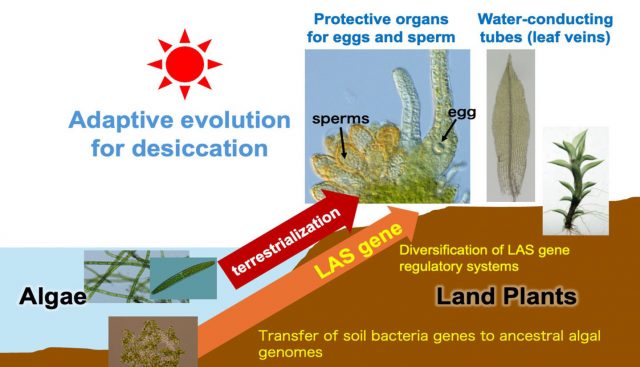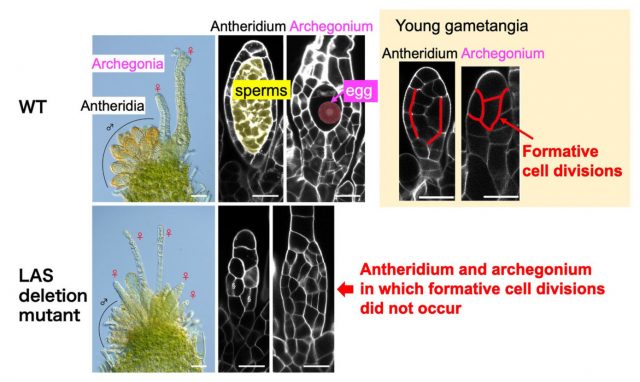Bacteria-derived genes made it possible for plants to expand on land
Feb 18, 2025
A collaborative research group, including Assistant Professor Dr. Rumiko Kofuji of the Faculty of Biological Science and Technology, Master’s student Naoyuki Umakawa of the Department of Life Science, Graduate School of Natural Science and Technology (at the time of the research), Kanazawa University, Special Collaborative Researcher Yuta Horiuchi of the National Institute for Basic Biology (at the time of the research: Doctoral student in the Department of Basic Biology, Graduate University for Advanced Studies, SOKENDAI), Assistant Professor Dr. Masaki Ishikawa, and Professor Dr. Mitsuyasu Hasebe, discovered that the evolution of protective structures for reproductive cells—key to plants’ successful colonization of land—was made possible by genes of bacterial origin.
Plants, much like animals, reproduce by producing sperm and eggs. Today, plants dominate the land, but around 500 million years ago, they were confined to aquatic environments such as oceans and lakes. The transition to land is believed to have been facilitated by the evolution of specialized structures: water-conducting tissues (like leaf veins) and protective structures that prevent sperm and eggs from desiccation. However, the genetic changes responsible for the development of these structures remained unclear. Two years ago, this research group reported that bacterial-derived genes, specifically GRAS transcription factors (*1), play a key role in the formation of water-conducting tissues (Ishikawa et al., 2023). This recent study has revealed that the same genes also contribute to the formation of protective structures for sperm and eggs. As a result, it has become clear that the three major structures essential for the terrestrialization of plants all evolved from genes originally derived from bacteria.
The above findings suggest that horizontal gene transfer between different organisms can play a pivotal role in driving major evolutionary transitions, such as the terrestrialization of plants. This discovery challenges the traditional view of evolution as a process driven solely by gradual modifications within an organism’s own genome, offering a fresh perspective on the mechanisms underlying evolutionary change.
The results of this research were published in the online Early View version of the British international scientific journal New Phytologist on December 31, 2024.

Figure 1: Evolution of organs and LAS genes during the terrestrialization of plants.

Figure 2: Antheridia and archegonia of the Physcomitrium patens with loss of the LAS gene.
Glossary
*1:GRAS Transcription Factors
GRAS transcription factors refer to a group of plant-specific proteins that regulate gene activity. These factors are categorized into several subfamilies, including LAS, SCR, and SHR, and are known to play critical roles in plant development and responses to phytohormones in
Click here to see the press release【Japanese only】
Journal :New Phytologist
Researcher’s Information: Rumiko Kofuji
About Machine Translation This site uses machine translation. PDF and image files may not be translated. In the case of any discrepancy between the Japanese site and English site, the original Japanese site shall prevail. Some pages are only available in Japanese.

